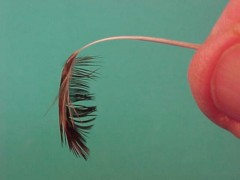Posts Tagged ‘trout’
{{start}}
{{end}}
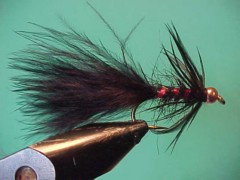
{{+1}}Banded bugger{{-1}}
{{start}}
A similar fly to a Shrek or Bloody Mary this fly is distinguished by the bands of fuzelled seals fur and holographic tinsel along the full length of the body. This is a particularly good point fly early and late in the season when the browns and bows are getting ready to make their spawn run. Brown with red or gold tinsel as well as olive with green tinsel also work well.{{end}}

{{+1}}Tarlington’s Corduliid (aka TC){{-1}}
{{start}}
I have fond memories of this fly from my early days of fly fishing. One of my favourite destinations was 'Frying Pan' which is the closest lake Eucumbene destination to Cooma where the TC was designed by Cooma resident Frank Tarlington. On one of those memorable trips to 'Frying Pan' I was introduced to one of the 'gun' regular fly fishers named Stan. When the mudeyes were on Stan would forgo all other flies and stick to a fly that he absolute confidence in , the TC. I have had a lot of respect for that fly ever since.{{end}}

{{+1}}Taihape tickler (aka Tie happy tickler){{-1}}
{{start}}
This fly is similar to a Craig's nightime but in my view has a wider day time application. The Craig's is highly respected as a night time fly when mudeyes are around whereas this fly works well in that situation but also more than holds its own during daylight hours during when either mudeyes or midge are around. Why it works when fish are on midge is any ones guess but it does.{{end}}

{{+1}}Claret hopper{{-1}}
{{start}}
A popular fly in the United Kingdom this fly is equally at home early and late in the season in Australia. We don't have any burgundy coloured hoppers that I am aware of but this buggy looking fly often works when the first and last of the seasons terrestrials are around. Whilst not a strong floater this fly ticks all the boxes for those that want an enticing fly that will sit in the surface film.{{end}}

{{+1}}Tea tree beetle – variant 1{{-1}}
{{start}}
One species that is a popular food source for trout is the tea tree beetle. This representation is tied in shades of black and brown colours that have stood the test of time. Many of the recipes you see use brown raffia as the wing case. I don't like raffia as a fly tying material and have substituted a hackle from the back of the ring neck pheasant. Its a similar colour to many of the recipes that have come before mine but its much more durable than the raffia.{{end}}

{{+1}}Geehi beetle{{-1}}
{{start}}
One of the key elements of this fly that has been overlooked in many fly patterns I have seen id the choice of the front hackle. Make sure its a 'cocky-y-bonddu' type hackle i.e. a ginger hackle with a black centre. The black centre of the hackle when wound in touching turns to the eye of the hook extends the beetle body along the full length of the shank of the hook and I an confident that is one of the keys to the success of this fly.{{end}}
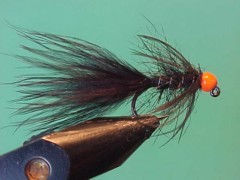
{{+1}}River Jig Bugger – CDC orange TBH and black{{-1}}
{{start}}
This is really good representation of a woolly bugger for river fishing. It sinks well and the jig hook encourages the fly to bounce along the bottom hook point up which of course mitigates snags. Whilst I have set the recipe out below for the brown, black and olive jig buggers I also tie my sparkle bugger and skirted buggers in the form of a jig bugger as shown in the photos below.{{end}}
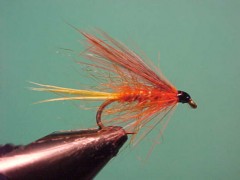
{{+1}}Dunkeld – Chatto’s fuzzeled variant{{-1}}
{{start}}
The Dunkeld is certainly one of my top 5 middle dropper flies for lock style fly fishing. Until 18 months ago I was using a version of the Dunkeld that had a hackle Palmered along the body as in the original. At that time I was experimenting with "fuzzeled" bodies an an alternative to bodies with a Palmered hackle and applied that technique to this fly with immediate success.{{end}}
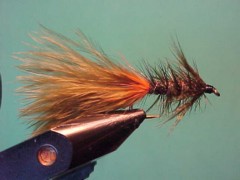
{{+1}}Skirted woolly bugger – Chatto’s original{{-1}}
{{start}}
Whilst not tied to imitate any natural food source it's a very buggy looking fly with heaps of trigger points including the marabou tail, the soft body and front hackles as well a the skit itself. In particular I like to incorporate blood red or orange skirts which are suggestive in the case of a red skirt as bleeding from around the base of the tail or the claws depending on what the fly is taken as or in the case of an orange skirt as a fish roe.{{end}}














